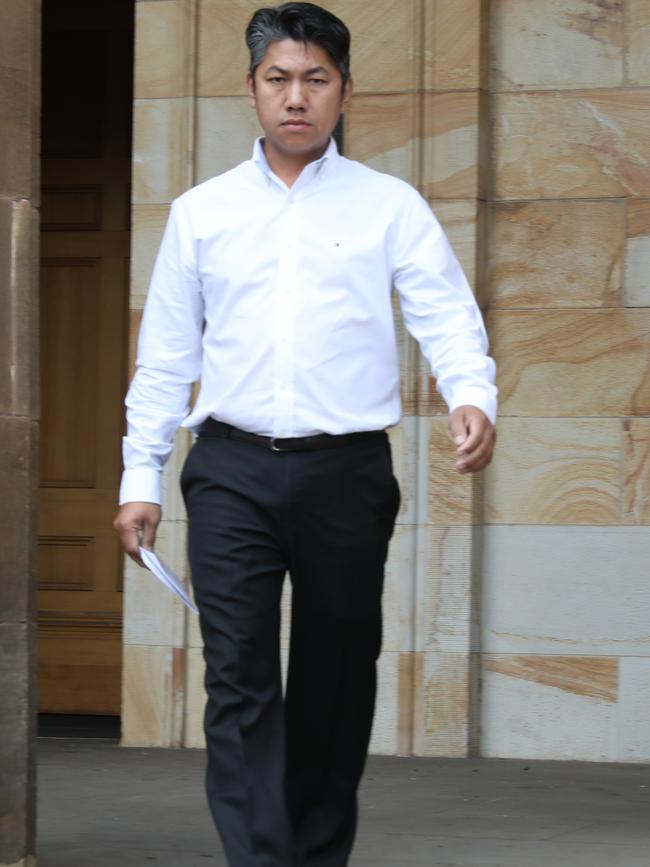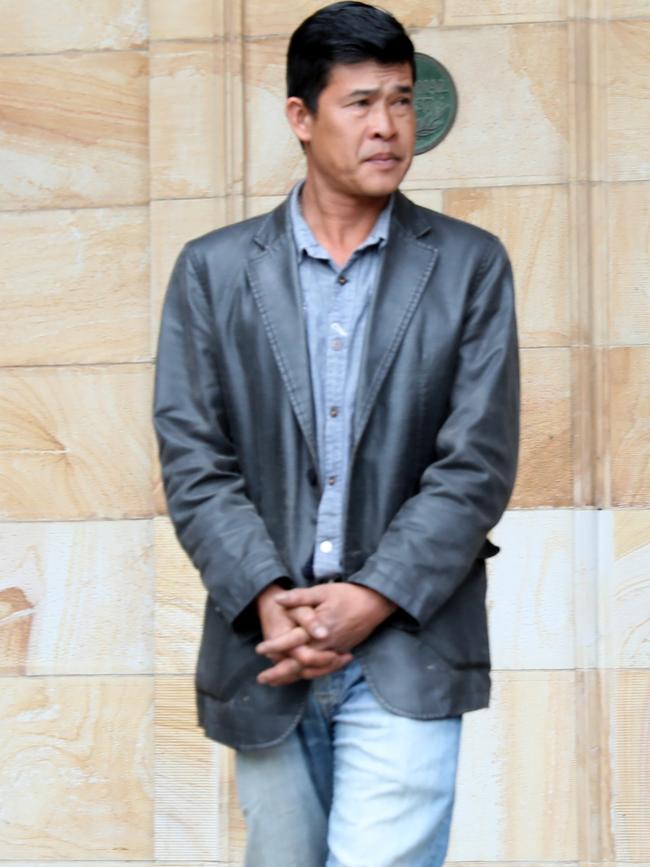Trio accused of one of the biggest phoenixing scams in Australian history
These men are accused of dudding the ATO of more than $20 million in one of the biggest alleged phoenixing scams in Australian history.
National
Don't miss out on the headlines from National. Followed categories will be added to My News.
EXCLUSIVE: These men are accused of dudding the ATO of more than $20 million in one of the biggest alleged phoenixing scams in Australian history.
Authorities claim Nathan Sarinn, Nay Chy and Seang Leng Heng — all from South Australia — used student visa holders as directors of sham labour-hire companies then siphoned GST and income tax that should have been sent to the Australian Taxation Office.
They have been charged with conspiracy to defraud under the Commonwealth criminal code, which carries a maximum jail sentence of 10 years.
With the help of a Khmer interpreter, the men entered pleas of not guilty in Adelaide’s District Court in December 2018.
Dodgy landlords tripped up by social media
Don’t answer this ATO phone call

A five-week trial is due to start on March 2 next year.
It’s understood the Commonwealth Director of Public Prosecutions will claim the directors either had no involvement in the companies or were merely workers and activity statements and income tax returns were not lodged from 2011 to 2013.
The labour-hire companies are believed to have supplied hundreds of abattoir employees from Taiwan and mainland China.

The amount the men will be accused of defrauding the ATO of exceeds $22 million.
It is thought to be one of the three largest alleged phoenixing scams in Australian history.
Phoenixing involves deliberate efforts to avoid paying creditors, whether they be the taxman, workers or other businesses. Last year the PwC estimated the annual cost of phoenixing at up to $5 billion.
The case is among the most significant to emerge from the little-known Phoenix Taskforce, which includes states and federal police, the ATO and Border Force.
Formed in 2014, the taskforce recouped $190 million of tax in 2017-18, up 200 per cent on two years earlier.
But its effectiveness has been questioned, with an Auditor-General report published in March saying it had “not yet demonstrated major results”.
In a bid to make itself more effective, in 2017 the taskforce told the government that increasingly “pre-insolvency advisers” were approaching the directors of companies in financial difficulty and suggesting phoenix activities. The advisers then conduct asset sales or restructures aimed at defeating creditors’ interests, thus leaving an assetless company for the subsequently appointed liquidator to wind up.

In a bid to tackle this, in February this year the Government introduced legislation to parliament that would create new criminal offences for directors who don’t stop “creditor-defeating” asset disposals.
The legislation is yet to become law and drew criticism during an inquiry by the Senate Economics Legislation Committee.
“Attacking illegal phoenix activity through legislation against creditor defeating dispositions will simply encourage the devious to accrue debts through an assetless company and hold assets in another company,” said Melbourne Law School professor Helen Anderson.
“While I understand the desire of honest professionals to have the word ‘phoenixing’ used in this legislation so they can point their clients to it, there is huge scope for illegal phoenix activity without creditor defeating dispositions,” Prof Anderson said.
“Please don’t imagine that the Australian Securities and Investments Commission will utilise their powers under this legislation to recover assets for creditors. They have stated repeatedly that they believe this to be the task of the liquidator. Indeed, asset recovery is the proper role for the liquidator. It is for ASIC to prosecute illegal phoenix activity through its existing Corporations Act powers, and there are already plenty.
“Do we really need more legislation?”
Prof Anderson declined to comment further when contacted.


